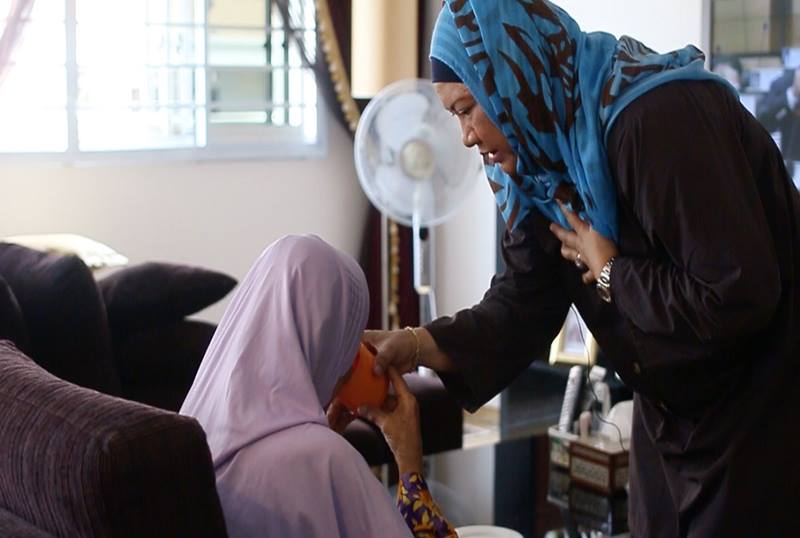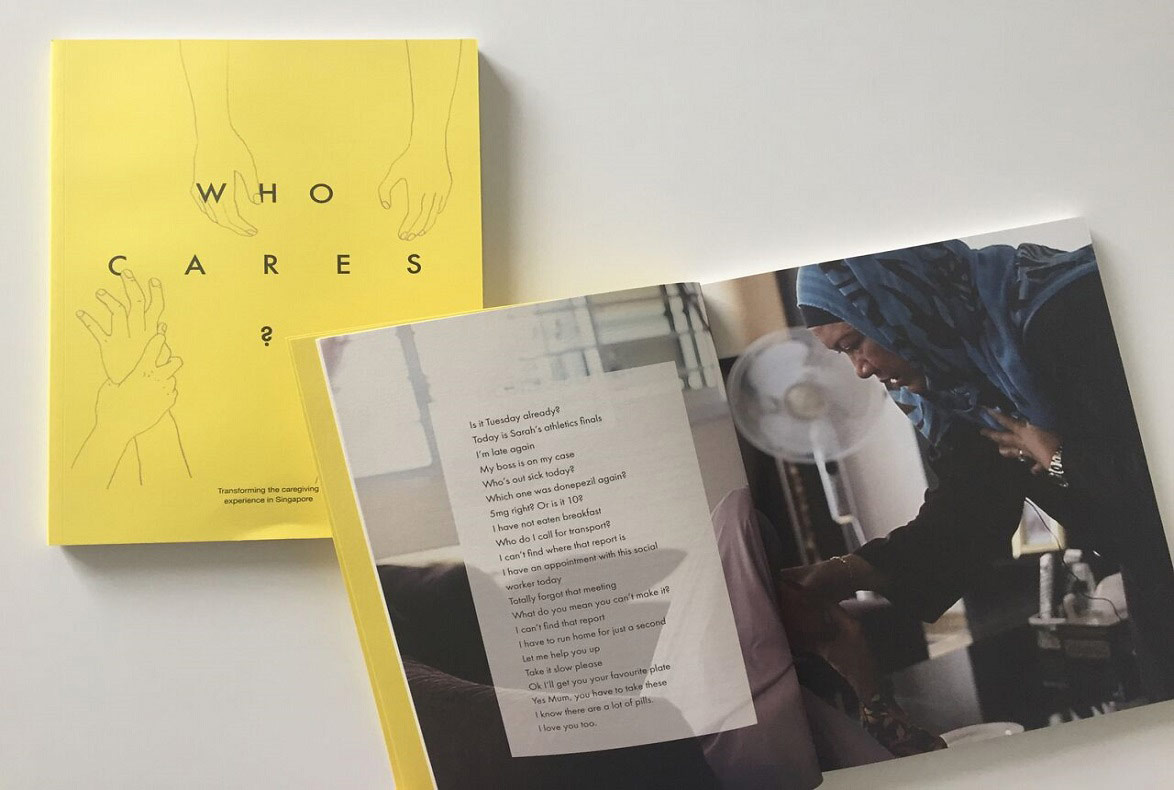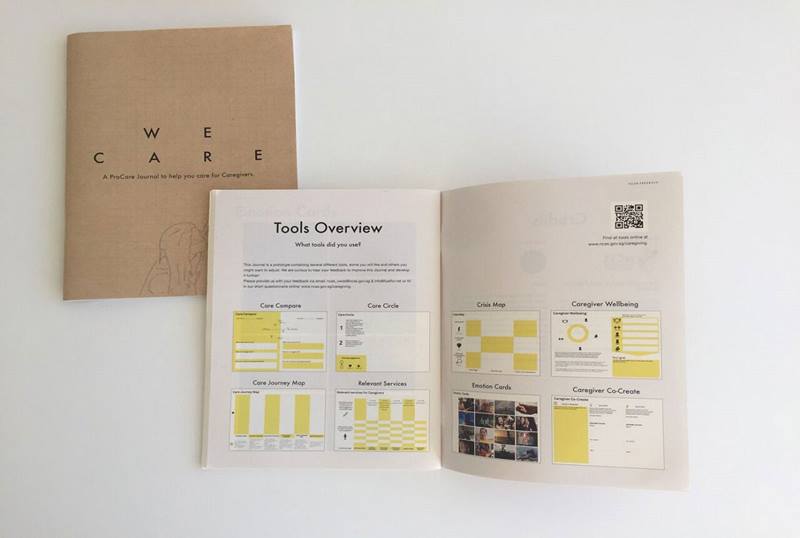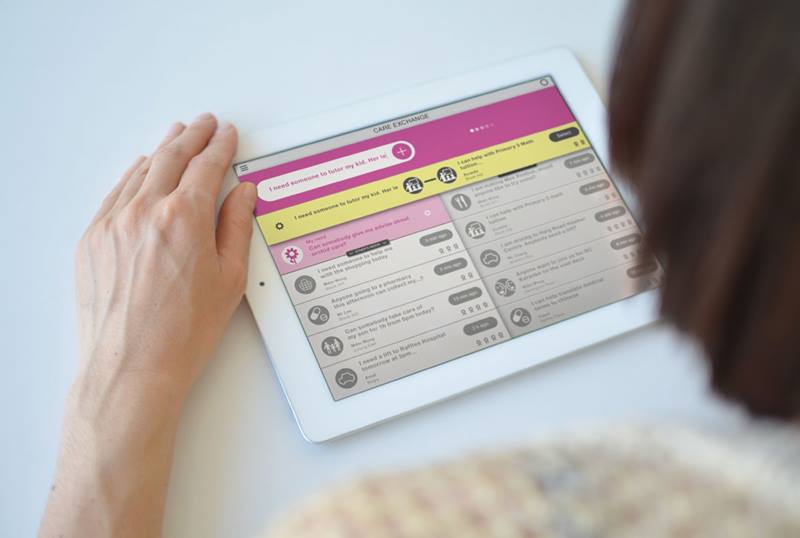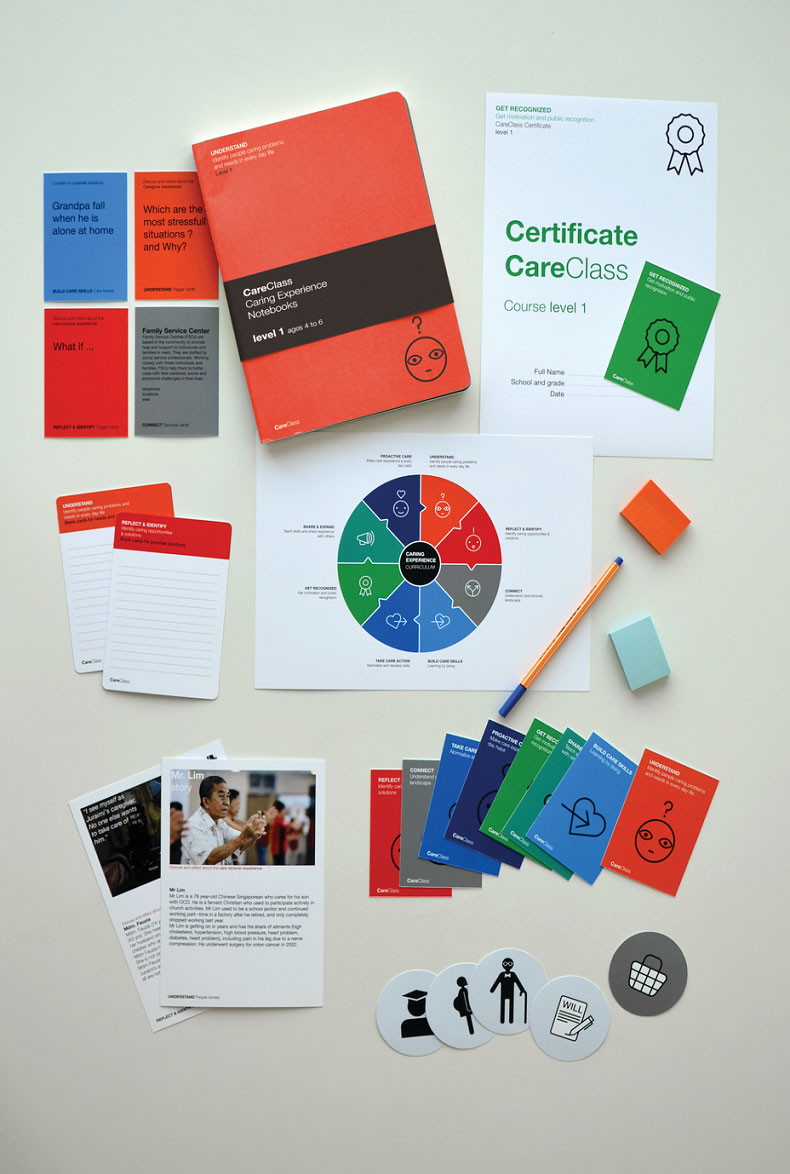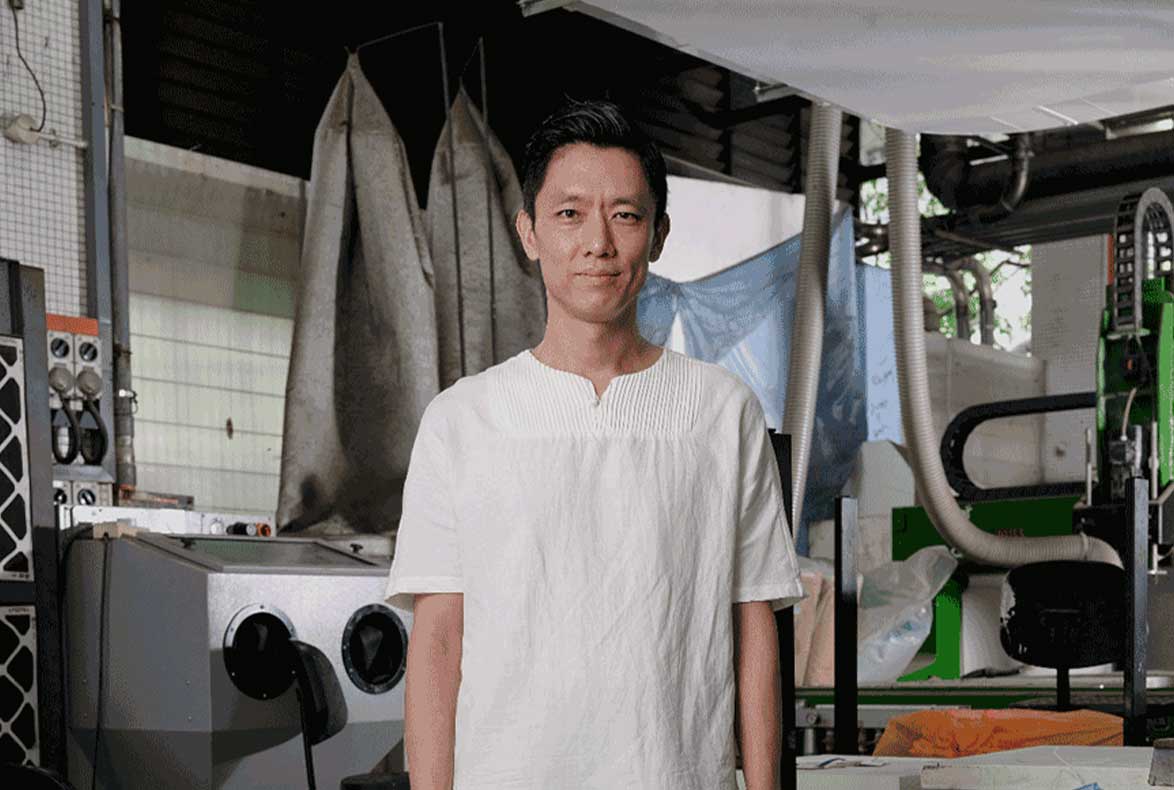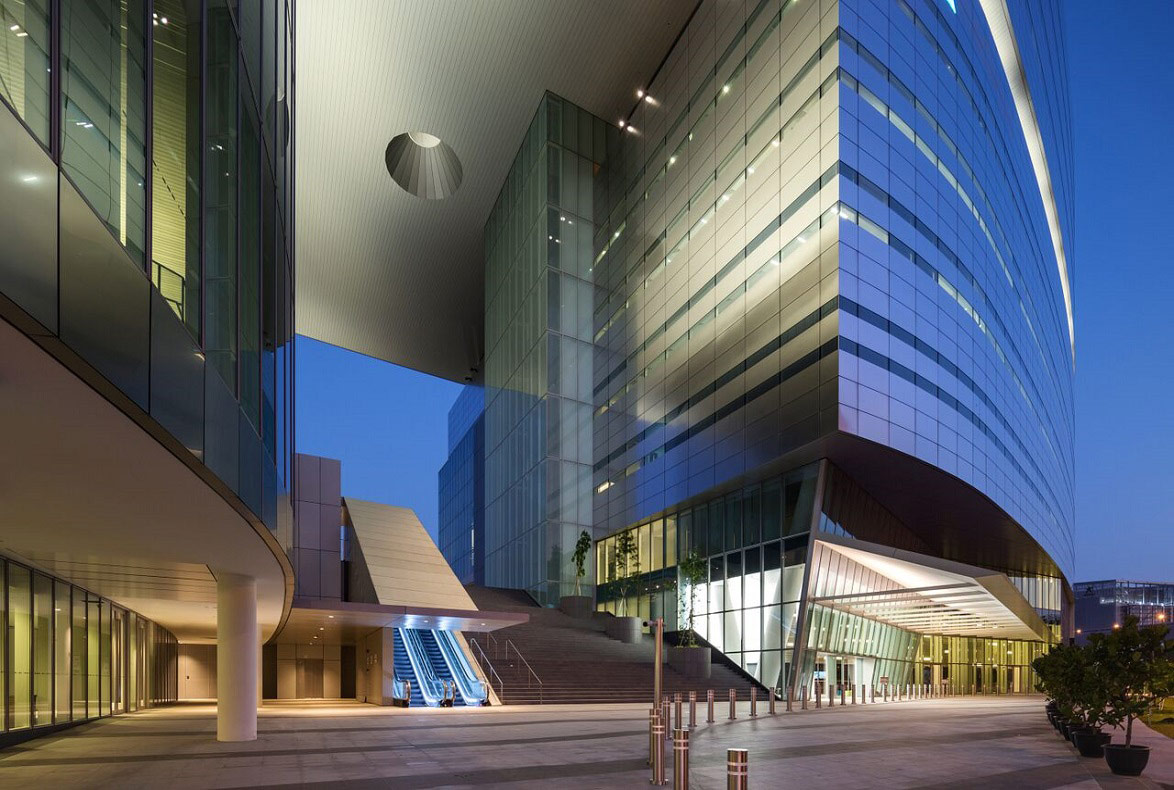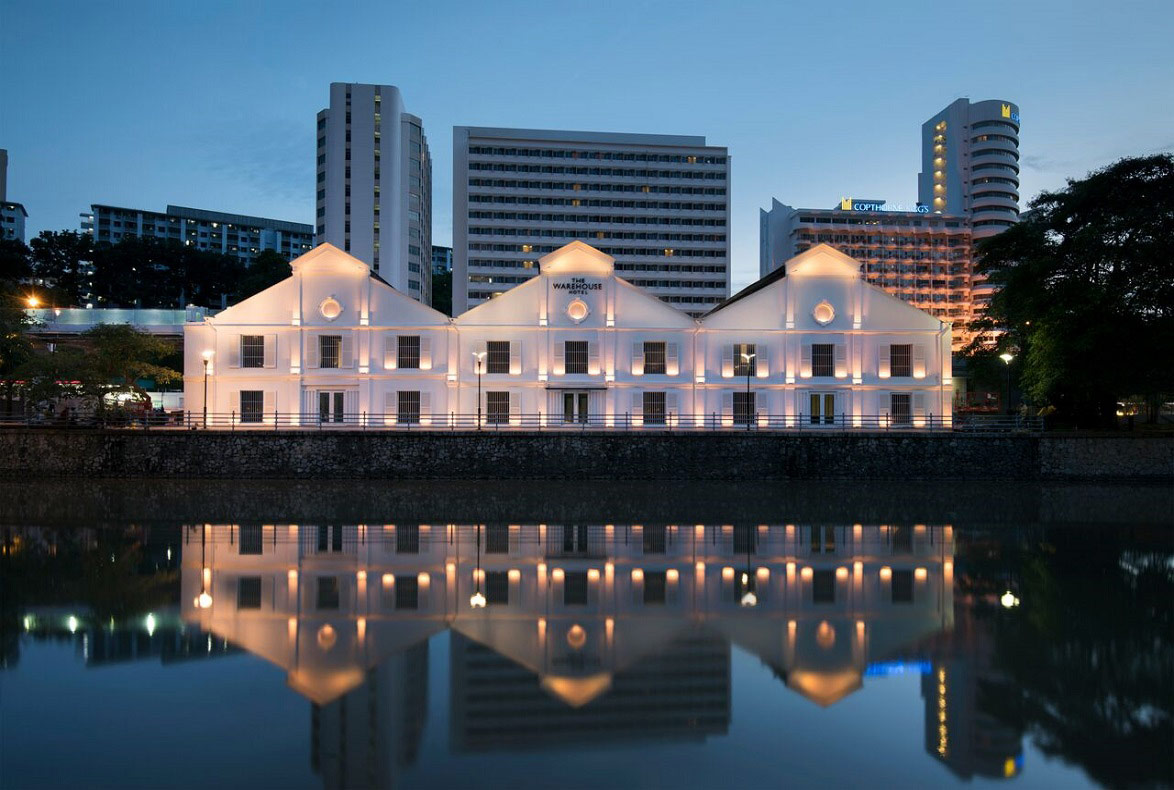DESIGN OF THE YEAR 2018
Who Cares? Transforming The Caregiving Experience in Singapore
Designer
fuelfor
CONTACT
[email protected]
It is a simple question that strikes at the heart of the problem: the indifference caregivers around the world face. Who Cares? is also the aptly named response that is poised to transform the future of caregiving in Singapore.
This design strategy was a result of fuelfor immersing themselves in the lives of 10 caregivers in Singapore. Their ethnographic approach made visible the complex challenges of providing care today, including the important role that caregivers play across the healthcare and social services. These insights and a co-creation process with the client and stakeholders—including policy influencers, patients, caregivers and care professionals—resulted in this proposal to systematically redesign the caregiving experience.
Consisting of seven concepts, the strategy offers wide-ranging solutions: from products to services, tools, spaces, policies, programmes and campaigns. These are presented in a publication and seven films that relate the complexities of caregiving through the fundamental emotions of caregiving. There is also a prototype toolkit to help social care workers care for caregivers as well as several launch events and sharing workshops.
At the end of 2016, Who Cares? inched closer to becoming an answer when several of its recommendations and ideas were integrated into the third edition of the Enabling Masterplan. Singapore’s five-year roadmap to support people with disabilities would now include caregivers too.
About the Designer
Fuelfor develops award-winning products and services using a design thinking approach that they have specifically tailored for healthcare challenges.
Fuelfor was co-founded in 2008 by László Herczegh and Lekshmy Parameswaran, two designers who have been working in the area of health and care for close to two decades. László previously spent eight years in the global healthcare team of Philips Design while Lekshmy also enjoyed a decade-long career at the company’s offices in London, New York and Eindhoven.
In 2017 they co-founded The Care Lab, a collaborative platform that uses human-centred design practices to drive change in the healthcare, social care and education sectors. It aims to rethink and redesign care models and solutions for our societies and care systems.
The National Council of Social Service (NCSS) is the umbrella body for over 450 member social service organisations in Singapore. Its mission is to provide leadership and direction in enhancing the capabilities and capacity of our members, advocating for social service needs and strengthening strategic partnerships, for an effective social service ecosystem.
The project lead behind Who Cares? is Pumpkin Lab, a team within the Service Planning & Funding Group in NCSS. Pumpkin Lab catalyses innovation in the social service sector by partnering a variety of stakeholders to inspire possibilities through design, testing, sharing and scaling best practices across the sector, with technology as an enabler.
DESIGNER
fuelfor
PARTNER AND PROJECT COLLABORATOR
National Council of Social Service
DESIGNER
fuelfor
PARTNER AND PROJECT COLLABORATOR
National Council of Social Service
1The complexities of providing care
To understand their needs, values, hopes and fears, the designers interviewed and shadowed 10 caregivers. This ranged from a lady who cares for both her mother with dementia and a child with distal arthrogryposis to an individual with disability who has to care for himself. The participants, aged between 21 and 78, came from a range of income classes, educational levels and belief systems.
(Photo by: fuelfor)2Co-creating a strategy
The designers, the client and other stakeholders worked closely to create Who Cares?. This included a creative workshop, where the designers and Marceline of NCSS (top left) watched videos about the caregivers before coming up with ideas. There were also several co-creation workshops — such as this one led by Lekshmy— held with caregivers, service providers, and decisionmakers across different sectors.
(Photo by: fuelfor)3Bringing alive stories of care
The design strategy is accompanied by seven short films and a book that communicate the complexity of caregiving to stakeholders across different sectors. Through the personal stories of caregivers, audiences could better understand this invisible and abstract issue. This was a key reason why policymakers adopted the strategies as part of Singapore’s Enabling Masterplan 2017-2021.
(Photo by: fuelfor)4Turning insights into action
Through the design thinking approach, the designers first gathered insights and then prototyped solutions. One example is a toolkit that social care workers can use to better understand caregivers and how to support them.
(Photo by: fuelfor)5Concepts for caregiving tomorrow
Who Cares? proposes seven concepts—From Crises to Prizes, Smooth Care Touch Points, The WayForward Programme, Caregiver Wellbeing, Care Concierge, Compassionate Community and Empathetic Education—to create an eco-system of new products, services, tools, spaces, policies, programmes and campaigns that will improve caregiving in the future.
(Photo by: fuelfor)6Concepts for caregiving tomorrow
Who Cares? proposes seven concepts—From Crises to Prizes, Smooth Care Touch Points, The WayForward Programme, Caregiver Wellbeing, Care Concierge, Compassionate Community and Empathetic Education—to create an eco-system of new products, services, tools, spaces, policies, programmes and campaigns that will improve caregiving in the future.
(Photo by: fuelfor)Insights from the Recipient
Marceline Chin (MC): At the NCSS , we are often looking at our citizens’ social needs. We knew smaller families and an ageing population would impact caregivers. Traditionally, we looked at caregivers as a resource rather than a client. We thought it was important to understand the issues they face and how we can assist them.
Lekshmy Parameswaran (LP): Fuelfor was thrilled because we had also recognised that the experience of this stakeholder—the caregiver— tends to be totally overlooked. It is a topic that we had discovered through a number of different projects over the years.
László Herczeg (LH): This very innovative framing of the challenge gave us the best chance to do something really out of the ordinary. Through our work, we have seen that it is just more sustainable to support caregivers than to concentrate on the patients alone. This is really a blind spot in healthcare systems around the world.
LP: In our projects, we start by understanding people’s experiences and end up with what we call “experience design” solutions. This insights-based approach to design is known as “design thinking” in Singapore. The research is important, but it’s the “action-ing” of the insights through design that is our end goal. Unlike more traditional forms of research, such as interviews and focus groups, we use an ethnographic approach to build empathy with people in their context. To understand caregivers, we needed to be with them wherever they might be. We were trying to understand the perspective of the caregiver by looking at the world through their eyes. We realised they are the “red thread” connecting multiple healthcare and social services because caregivers journey with patients or clients through all these areas.
LH: Another early insight is caregivers don’t really have an identity. It’s very clear you are a patient when you undergo medical processes. But many caregivers were asking us: “Why are you talking to me? I’m no one in this whole setup.”
LH: We are so happy to be awarded the President*s Design Award because it recognises this other kind of design besides the traditional idea of products or buildings. Our project is about designing for change. Our role as designers is to facilitate change and enable people to see where they might want to go.
In the beginning, we brought these really rich personal stories to people within the industry and decision-makers from organisations that deliver social care. Suddenly, the issue was no longer abstract, but a real-life story that they could relate to. By translating these stories into design concepts, such as creating a physical “Care Hub” where caregivers’ wellbeing is addressed, we could have people in the sector discuss these possible scenarios and kick-start change in their respective organisations. You could see our seven concepts as weapons that help people figure out the kind of change they want.
LP: For us, design in this project is about making stories and opportunities tangible. This is particularly important as we are working across sectors and with different levels of stakeholders. The scale at which we are trying to transform is so huge that it is also not for us—as designers—to solve these problems alone. In order to co-create solutions, we needed to give people a way of gathering around an idea. Through visualisation, we brought a form of tangibility to the issue.
LH: We wanted to communicate insights in a manner that is really accessible. Every discipline has its own jargon and it can be quite abstract for a layperson. We collaborated with a writer who, after watching Beyoncé’s video Lemonade, suggested using straightforward, direct emotions to frame the insights. This really works because people can immediately relate to these emotions.
For the films, we were also mashing up filmmaking and design research. They are not just about recording data; we needed to synthesise them too. We worked with a filmmaker to create these films that contributed to the outcome. Filmmaking is a fantastic way of communicating your insights and making them very easy to share.
LP: Talking about mashing up disciplines, we did not collaborate with people in this kind of “handingover” way. Our writer joined us in the fieldwork when we were extracting the stories too. She understood the human-centred approach to our project and ultimately her suggestion to frame all the stories around emotions is exactly what we were trying to analyse and extract too.
LH: This project is about designing change, and we needed to design a strategy in which you have a roadmap of solutions or propositions that can impact in different points. One of the solutions that can be quite immediately used is the toolkit for social care workers to better understand the issues caregivers face. On the other end of the spectrum is the Care Class, which came about when we realised that caregiving is isolated within society and there is a lot of taboo around it. A more sustainable way of tackling this is to talk about it in an informed manner and from an early age. We thought kids should learn about caring for themselves, others, society and the environment. Within this framework, their generation could become very different caregivers because their thinking around care is more developed.
Citation
Jury Citation
Nominator Citation
László Herczeg
Director
fuelfor design and consulting S.L.
Who Cares? is a strategic design project to create a better caregiving future for Singapore. The Jury commends its vision and ambition, which turns the spotlight onto an often-overlooked segment of the healthcare industry—the caregivers. Through rigorous research, a sensitive insights-based approach and close collaboration with their clients and stakeholders, the design team created a comprehensive proposal to build an ecosystem to support the rising number of caregivers in anticipation of Singapore’s ageing population.
The Jury is especially impressed by the care given to developing a holistic strategy that addresses current and future issues. Instead of “throwing money at an app” or finding similar technology-based solutions, the design team put together seven concepts with differing levels of impact—from policy to personal—which were effectively communicated through user-friendly and accessible platforms. These include a book, a toolkit and video stories. Besides their impact, these collaterals were visually powerful and aesthetically well-designed.
Also deserving of recognition is the client, the National Council of Social Service. It is evident that they were intimately involved—proving that behind each successful project is an equally successful meeting of minds between client and designer.
A service design strategy may not be what many designers would be willing to take on, given its laborious ethnographic processes, “unglamorous” subject matter and uncertain outcomes. The team has shown that the emotional rewards of such endeavours trump these challenges. Having successfully pushed for caregiving support as one of the four key thrusts of Singapore’s Enabling Masterplan 2017-2021, Who Cares? has great potential for significant long-term impact on a national level.
The National Council of Social Service (NCSS) commissioned fuelfor to conduct a strategic design project to design a better caregiving experience for Singapore. The challenge of caregiving is a timely and universal topic that is relevant beyond Singapore; most health and social care systems are buckling under the pressures of an ageing society and rising incidence of chronic diseases. The role of the caregiver is invisible in society and to services, and yet it becomes crucial to understand, as caregivers often provide the “red thread” of continuity between care services, always by the side of the patient or client.
This project is unique in applying the principles of experience design to this systemic challenge of the social care sector. Fuelfor set out on a design ethnography process to understand in depth the issues and needs of caregivers in the complex needs space; interviewing, shadowing and filming 10 different caregivers. The project was also unique in the use of co-design to engage stakeholders from across and within the health and care sectors throughout the design process: policy influencers, patients, caregivers and care professionals.
The outcome of this project is a future vision of caregiving for the nation, articulated as an actionable design strategy and visualised through seven concepts that inform innovation and drive implementation of a wide range of solutions: new products, services, tools, spaces, policies, programmes and campaigns. Outputs include a vision publication, seven films to communicate the fundamental emotions of complex caregiving, a prototype of a new toolkit to help social care professionals care for caregivers, and several targeted launch events and sharing workshops.
The project’s recommendations and ideas have been integrated into the five-year Enabling Masterplan for Singapore, and its results are informing and inspiring innovation with the caregiver in mind beyond the country.

